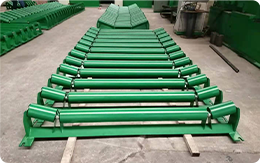 Afrikaans
Afrikaans  Albanian
Albanian  Amharic
Amharic  Arabic
Arabic  Armenian
Armenian  Azerbaijani
Azerbaijani  Basque
Basque  Belarusian
Belarusian  Bengali
Bengali  Bosnian
Bosnian  Bulgarian
Bulgarian  Catalan
Catalan  Cebuano
Cebuano  Corsican
Corsican  Croatian
Croatian  Czech
Czech  Danish
Danish  Dutch
Dutch  English
English  Esperanto
Esperanto  Estonian
Estonian  Finnish
Finnish  French
French  Frisian
Frisian  Galician
Galician  Georgian
Georgian  German
German  Greek
Greek  Gujarati
Gujarati  Haitian Creole
Haitian Creole  hausa
hausa  hawaiian
hawaiian  Hebrew
Hebrew  Hindi
Hindi  Miao
Miao  Hungarian
Hungarian  Icelandic
Icelandic  igbo
igbo  Indonesian
Indonesian  irish
irish  Italian
Italian  Japanese
Japanese  Javanese
Javanese  Kannada
Kannada  kazakh
kazakh  Khmer
Khmer  Rwandese
Rwandese  Korean
Korean  Kurdish
Kurdish  Kyrgyz
Kyrgyz  Lao
Lao  Latin
Latin  Latvian
Latvian  Lithuanian
Lithuanian  Luxembourgish
Luxembourgish  Macedonian
Macedonian  Malgashi
Malgashi  Malay
Malay  Malayalam
Malayalam  Maltese
Maltese  Maori
Maori  Marathi
Marathi  Mongolian
Mongolian  Myanmar
Myanmar  Nepali
Nepali  Norwegian
Norwegian  Norwegian
Norwegian  Occitan
Occitan  Pashto
Pashto  Persian
Persian  Polish
Polish  Portuguese
Portuguese  Punjabi
Punjabi  Romanian
Romanian  Russian
Russian  Samoan
Samoan  Scottish Gaelic
Scottish Gaelic  Serbian
Serbian  Sesotho
Sesotho  Shona
Shona  Sindhi
Sindhi  Sinhala
Sinhala  Slovak
Slovak  Slovenian
Slovenian  Somali
Somali  Spanish
Spanish  Sundanese
Sundanese  Swahili
Swahili  Swedish
Swedish  Tagalog
Tagalog  Tajik
Tajik  Tamil
Tamil  Tatar
Tatar  Telugu
Telugu  Thai
Thai  Turkish
Turkish  Turkmen
Turkmen  Ukrainian
Ukrainian  Urdu
Urdu  Uighur
Uighur  Uzbek
Uzbek  Vietnamese
Vietnamese  Welsh
Welsh  Bantu
Bantu  Yiddish
Yiddish  Yoruba
Yoruba  Zulu
Zulu conveyor idler specifications
Understanding Conveyor Idler Specifications An Essential Guide
Conveyor systems play a pivotal role in various industries, ensuring the efficient transport of materials. At the heart of these systems lies a crucial component known as the conveyor idler. Idlers not only support the weight of the conveyor belt and the materials it carries but also significantly impact the overall performance and longevity of the conveyor system. This article breaks down conveyor idler specifications, helping you make informed decisions for your operations.
1. Definition and Functionality
Conveyor idlers are rollers positioned between the drive and tail pulley, typically spaced apart along the length of the conveyor belt. Their primary functions include supporting the belt and material load, maintaining belt alignment, and reducing friction as materials move along the conveyor. By facilitating smooth operation, idlers help to minimize wear and tear on the belt while decreasing energy consumption, leading to cost savings over time.
2. Types of Idlers
Idlers come in various types, including
- Parallel Idlers These are the most common and are used for standard applications. They consist of rollers positioned parallel to one another.
- Trough Idlers These are designed to support the belt in a trough shape, which helps maintain the stability of the material load during transportation. They are ideal for bulk materials.
- Impact Idlers These are used at loading points to absorb the impact of material falling onto the belt, helping to reduce damage to both the idler and the belt itself.
- Returning Idlers Positioned underneath the return section of the conveyor, these help ensure that the conveyor belt remains flat and in alignment.
When evaluating conveyor idlers, several key specifications should be considered
conveyor idler specifications

- Diameter The diameter of the idler rolls can significantly affect the conveyor system's performance. Common diameters range from 3 inches to 12 inches, with larger diameters providing more support and less friction.
- Length Idler length is determined by the width of the conveyor belt. Proper idler length ensures that the belt is adequately supported, preventing sagging and potential damage.
- Material Idlers can be constructed from various materials, including steel, plastic, and rubber. The choice of material impacts durability, weight, and resistance to environmental factors such as moisture and chemicals.
- Roller Type The design of the roller influences the idler's performance. Common roller types include solid, tubular, and spiral designs. The choice depends on the specific application and the type of material being transported.
- Bearing Type The type of bearing used in idlers can affect maintenance requirements and operational lifespan. Options include roller bearings, which provide smooth operation, and plain bearings, which might suit less demanding applications.
4. Load Capacity and Spacing
The load capacity of idlers depends on their size and material strength. Properly specifying idlers that can handle the expected load is crucial to avoid failures. It’s also important to determine the spacing between idlers, which is typically calculated based on the belt width and load. Standard spacing ranges from 3 to 5 feet, but specific applications might require adjustments.
5. Maintenance Considerations
Regular maintenance of idlers can extend their lifespan and enhance the performance of your conveyor system. Inspecting for wear, ensuring proper alignment, and checking for lubrication in roller bearings are important routine tasks. A sound maintenance schedule helps avoid costly downtime and repairs.
Conclusion
Understanding conveyor idler specifications is vital for optimizing your conveyor system's efficiency and lifespan. By selecting the right type, material, and configuration of idlers, businesses can ensure smoother operations, reduced wear and tear, and enhanced productivity. As industries evolve, so do the technologies surrounding conveyor systems, making it more important than ever to stay informed about the specifications and innovations in conveyor idler design. This knowledge will empower you to make better decisions for your operational needs.
-
Revolutionizing Conveyor Reliability with Advanced Rubber Lagging PulleysNewsJul.22,2025
-
Powering Precision and Durability with Expert Manufacturers of Conveyor ComponentsNewsJul.22,2025
-
Optimizing Conveyor Systems with Advanced Conveyor AccessoriesNewsJul.22,2025
-
Maximize Conveyor Efficiency with Quality Conveyor Idler PulleysNewsJul.22,2025
-
Future-Proof Your Conveyor System with High-Performance Polyurethane RollerNewsJul.22,2025
-
Driving Efficiency Forward with Quality Idlers and RollersNewsJul.22,2025





























